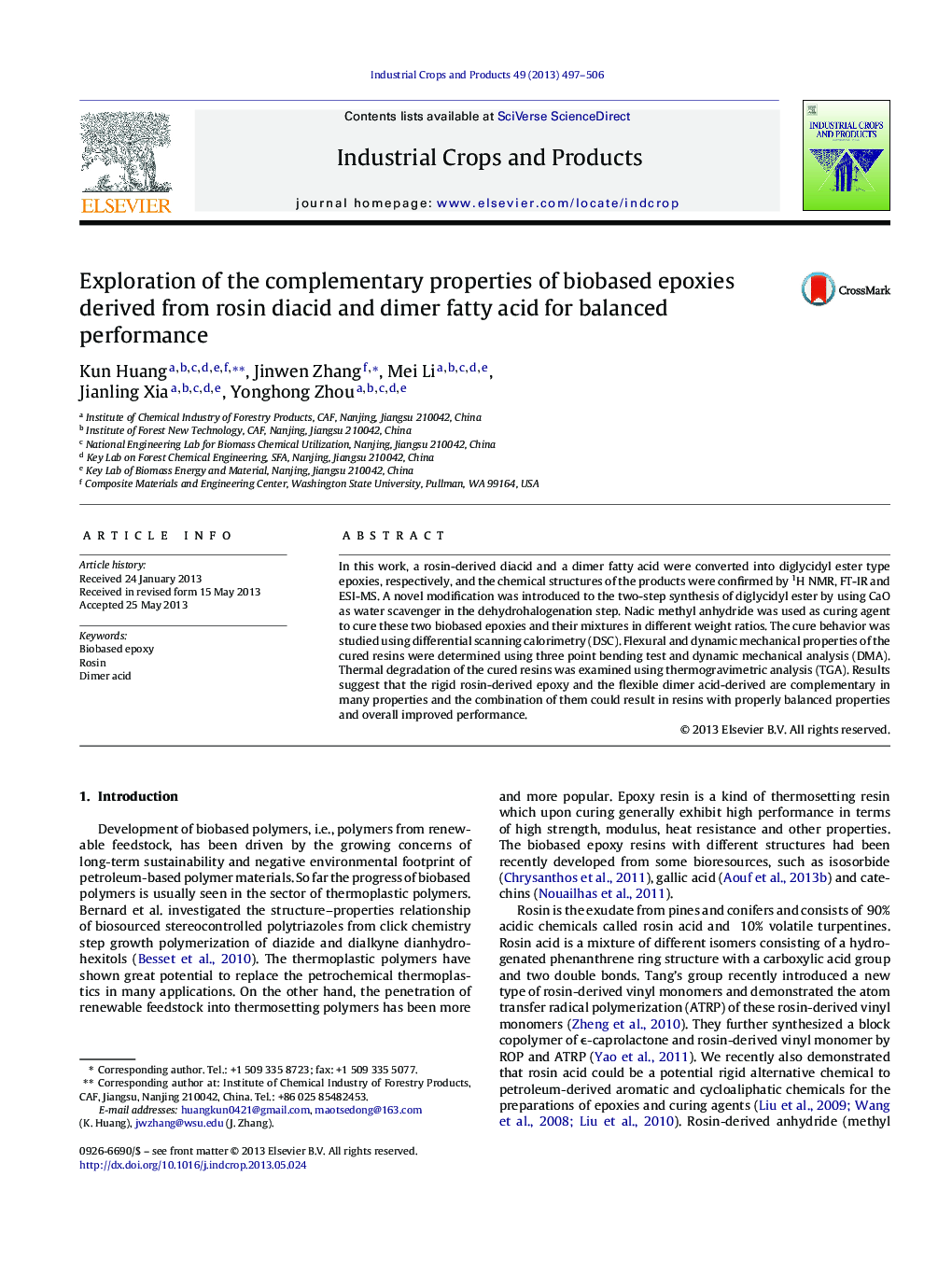| Article ID | Journal | Published Year | Pages | File Type |
|---|---|---|---|---|
| 6377424 | Industrial Crops and Products | 2013 | 10 Pages |
â¢Rosin and dimer fatty acid based epoxies were synthesized by a modified method.â¢CaO as water scavenger in the dehydrohalogenation step of the synthesis.â¢The dimer acid epoxy was complementary to the rosin epoxy in mechanical and thermal properties.â¢The mixed epoxies containing 20-40 wt% of dimer acid epoxy exhibited overall high performance.
In this work, a rosin-derived diacid and a dimer fatty acid were converted into diglycidyl ester type epoxies, respectively, and the chemical structures of the products were confirmed by 1H NMR, FT-IR and ESI-MS. A novel modification was introduced to the two-step synthesis of diglycidyl ester by using CaO as water scavenger in the dehydrohalogenation step. Nadic methyl anhydride was used as curing agent to cure these two biobased epoxies and their mixtures in different weight ratios. The cure behavior was studied using differential scanning calorimetry (DSC). Flexural and dynamic mechanical properties of the cured resins were determined using three point bending test and dynamic mechanical analysis (DMA). Thermal degradation of the cured resins was examined using thermogravimetric analysis (TGA). Results suggest that the rigid rosin-derived epoxy and the flexible dimer acid-derived are complementary in many properties and the combination of them could result in resins with properly balanced properties and overall improved performance.
